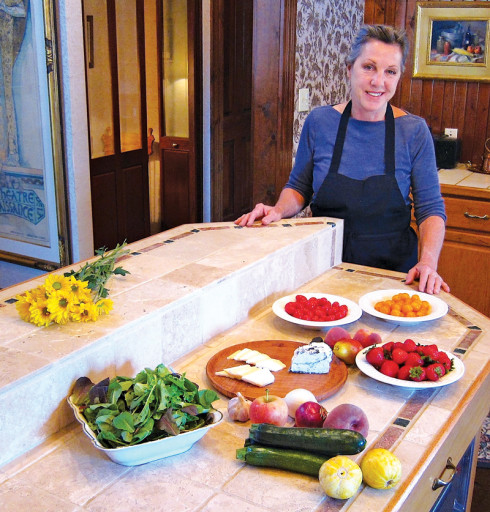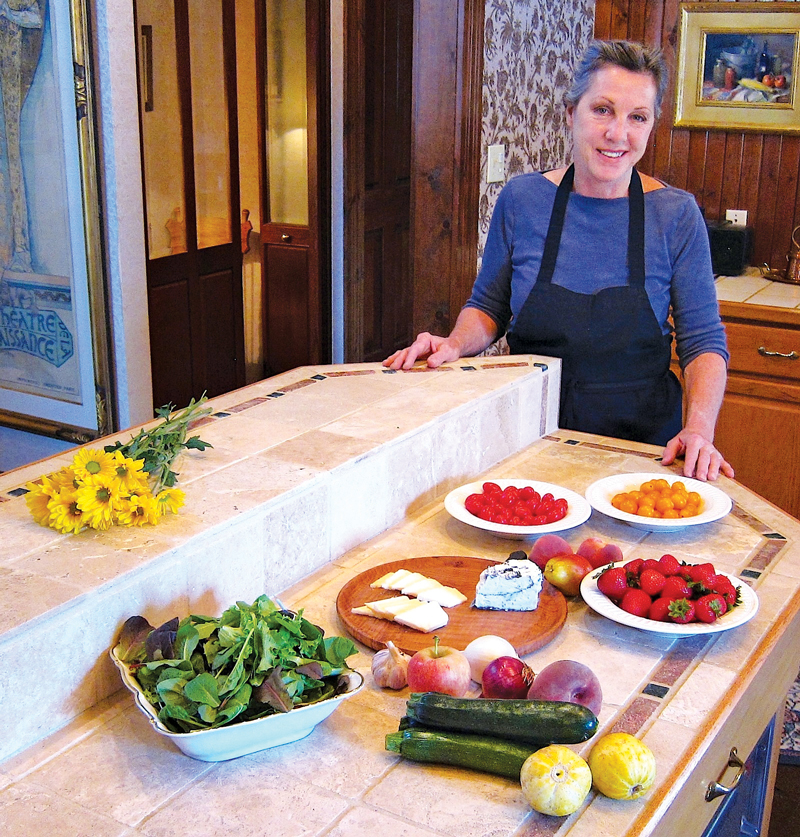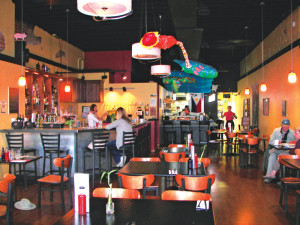By Hal Walter
We don’t often think of the conservation and local food movements as being interrelated. However, two events I recently attended spelled out just how interconnected two causes could and should be.
Central to both are undeveloped land and clean water, and healthy local economies. It’s an often overlooked fact that agriculture in the Arkansas Valley is central to keeping water flowing in the river throughout central Colorado. For instance, if it were not being used to irrigate chiles, melons and many other fine crops in the river’s lower reaches, the water might be siphoned off higher and sent to the Front Range to irrigate medians. Moreover, when irrigated land is “dried-up” then it often goes under development.

I was asked recently to be a docent at the San Isabel Land Protection Trust’s annual Art in the Sangres event. The art show and event showcases the work of many of the region’s finest artists, and one-third of the proceeds go to the land trust’s operating budget for work on critical conservation projects. This year’s art sale brought in $86,000 in sales, so the land trust took in about $28,000 on the event.
Since in my other life I am a marketing specialist for Arkansas Valley Organic Growers (AVOG), a co-op of farmers operating within the Arkansas River watershed, I made the suggestion that the land trust serve up some local food for the event.
Soon Local Chef Marian Williams, of Marian’s Gourmet Desserts and Catering, was transforming locally grown ingredients into culinary delights for the art sale, which was held at the Historic Pines Ranch.
“Having access to fresh fruit, vegetables and cheese through AVOG is a great opportunity for me to support our local growers and to promote sustainability here in the Wet Mountain Valley,” Marian said.
Ben Lenth, executive director of the San Isabel Land Protection Trust said local food from AVOG was a perfect match for the art sale.
“In the last 20 years, Colorado lost more than two million acres of agricultural land to development,” Ben says. “In addition to the essential role of local farms and ranches to food production, these lands also provide employment, iconic scenery, and essential wildlife habitat. Is there any land use other than agriculture that can provide all of this?”
In the final analysis we’d not only helped promote food and conservation, but also local art. I was assigned to represent my neighbor, artist Lorie Merfeld-Batson. She sold three paintings at the event, helping the sales total top last year’s by about $7,000.
A few nights later I was the guest of Avondale farmer Dan Hobbs when he was awarded the Palmer Land Trust’s 2012 Innovation in Conservation Award.
Dan was recognized for his achievements in strengthening agriculture in the Arkansas River Valley, particularly in the areas of building organic farming alliances and farm-to-table infrastructure, as well as securing financial investments and technical assistance for the local farming community.
He farms near Avondale with partner Jamie Dunston, raising a variety of certified organic vegetable and seed crops on his Hobbs Family Farm. He is especially well-known for his wonderful garlic.
The award was presented before an audience of 320 at Cheyenne Mountain Resort following a local-foods dinner featuring vegetables from Arkansas Valley Organic Growers, which Hobbs founded in 2006.
“Things are getting exciting out in the countryside,” said Dan in accepting his award. “There is an unprecedented level of synergy and momentum in the Arkansas River watershed. I’m not just talking about a set of neat projects, but thoughtful, long-term thinking, planning and implementation.”
He noted that 10 years ago the audience likely would not have enjoyed a local food dinner at such an event. In fact, vegetables served to the audience were from his and other Arkansas River Valley farms. Beef was provided by Ranch Foods Direct of Colorado Springs.
Dan was nominated for the Award by Jay Frost, an AVOG member who farms and ranches along the Fountain Creek between Colorado Springs and Pueblo, and who has made a commitment to conservation. In recent years he’s placed parcels of his family’s ranch – and, perhaps more importantly, some of the water that’s tied to them – under conservation easements. In total, 2,600 acres of land were protected from future development. Much of it is riparian ecosystem along the Fountain, habitat for wildlife ranging from small mammals, birds and aquatic life such as fish and turtles, to beaver, deer and even the occasional bear.
In his acceptance, Dan said, “One of the collaborations I am most pleased about is between the conservation community and the production agriculture community,” noting the land trust’s plans fit beautifully with those of regional agricultural organizations to assist mid-size and small-scale farmers and ranchers through cooperative economic development, in which producers are profitable, consumers have access to high-quality, fresh local food and natural resources are preserved and improved.
And there you have it. By working together, we accomplish more. I look forward to seeing more collaboration on good causes like this in the future. We’re all in this together, and the shared visions of land and habitat conservation and locally produced foods are just one good example.
Hal Walter writes and edits from the Wet Mountains. You can keep up with him regularly at his blog: www.hardscrabbletimes.com



